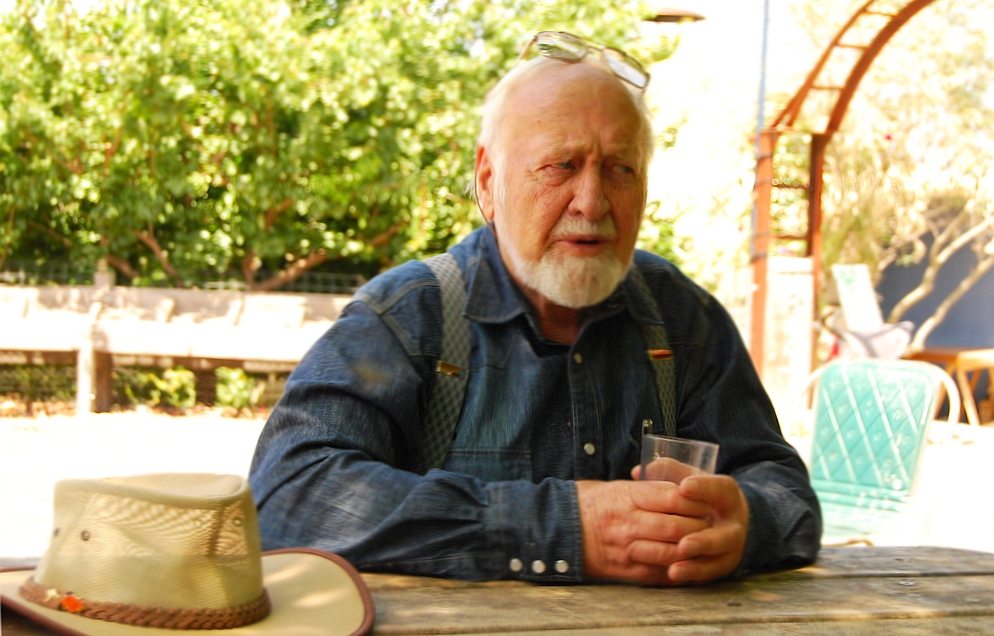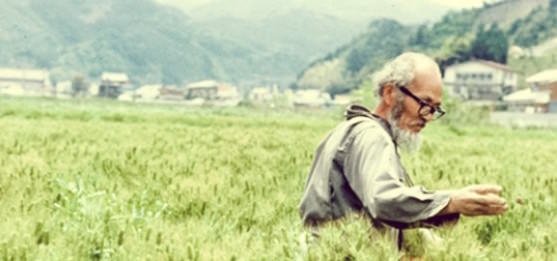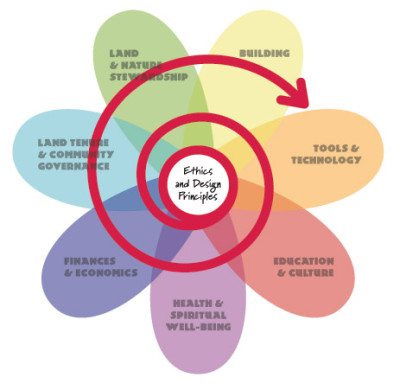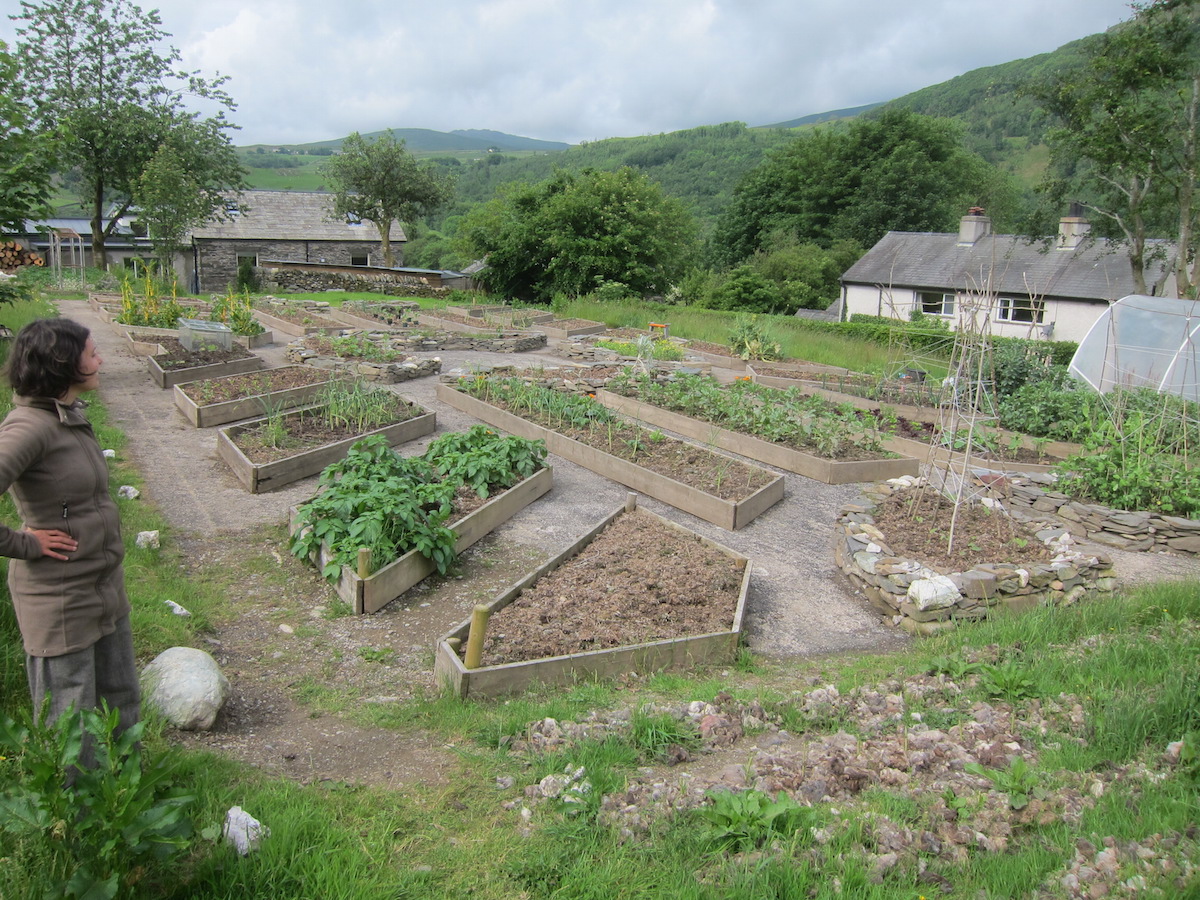With increasing numbers of farmers and growers turning to lower input methods to produce food, we explore the role of Permaculture and take a look at a few case studies. Phil Moore, new contributor and one half of Permapeople (the producers behind the online film series ‘Living With The Land’) reports.
Permaculture is many things to many people. Resisting easy definition here’s a description from Bill Mollison’s magnum opus, ‘Permaculture: A Designers’ Manual’, originally published in 1988, and considered a foundational text:
“Permaculture is the conscious design and maintenance of agriculturally productive ecosystems which have the diversity, stability, and resilience of natural ecosystems. It is the harmonious integration of landscape and people providing their food, energy, shelter, and other material and non-material needs in a sustainable way.”
There’s a lot in this description that leads to more questions than answers. Is Permaculture a design science, a way of seeing the world, a movement, or all of these things? Bringing together the hard edge of sciences, an ethical stance and a series of attitudinal principles, Permaculture stands somewhere between what has been caricatured as a card carrying cult and ecology in action.

The origins of Permaculture
Broadly speaking Permaculture is about designing sustainable human settlements. Integrating ecology, organic husbandry, architecture, and landscape design, with the use of appropriate technologies Permaculture(s) seek to create systems in step with the natural world and its resources. Much of Mollison’s work drew upon the ideas of Masanobu Fukuoka, farmer-philosophy whose book ‘The One-Straw Revolution’, propounded, with elegantly simplicity, the case for a no-till agriculture working with the grain of nature [See our review of The One-Straw Revolution]

Permaculture is a portmanteau word combining ‘permanent’ and ‘agri-culture’. Both a way of seeing and acting in the world, Permaculture is preoccupied with our place in the scheme of things and how we go about our business.
Its origins as a word lie in 1970s Australia (and arguably as a concept, thousands of years before that. Indeed many of Mollison’s ideas were inspired by pre-agricultural societies and their approach to cultivation and food culture). Coined by Bill Mollison and David Holmgren to describe an “integrated, evolving system of perennial or self-perpetuating plant and animal species useful to man”, Permaculture was very much a reaction – and active response – to what was an essentially alien, temperate inspired, and European modelled agriculture on an ancient Antipodean landscape. This sense of a precarious agriculture was compounded during the first oil shock in the early 70s when OPEC declared an oil embargo hiking up the price of what was, and remains, the driver of much of our modern world and commercial agriculture. The pinch was quickly felt in modern farming, the sort which Colin Tudge describes as monocultural, high intensity and profit driven.
In his book ‘Permaculture: Principles and Pathways beyond Sustainability’ (2004), Holmgren’s definition of Permaculture as, “[c]onsciously designed landscapes which mimic the patterns and relationships found in nature, while yielding an abundance of food, fibre and energy for provision of local needs,” opened the vision up to include the idea of permanent (sustainable) cultures – not just agriculture.
Ethics, Ecology and Design
Spilling across the many definitions and expressions of Permaculture, several themes can be discerned. Perhaps it would be instructive to break them down into three overall categories: ethics, ecology and design.

Permaculture is built on the foundation of ethics which inform and underpin its guiding principles. These ethics, which form a three legged stool upon which a number of design principles sit are: ‘Care of the Earth’; ‘Care of People’, ‘Fair shares’. Relatively self explanatory, perhaps the last – ‘Fair Shares’ – is the trickiest, philosophically speaking.
‘Fair shares’ is a neatly rhyming headline for an idea: setting limits to consumption and reproduction and redistributing surplus for the benefit of the planet (i.e. returning, recycling and careful use of macronutrients such as potassium, magnesium, calcium required in large amounts for plant growth) and for people (there is plenty of food in the world, the sticking point is distribution — and political will). The third ethic is an acknowledgement that we only have one earth and we have to share it and its resources with all living things – now and into the future. By governing our own needs and thinking ecologically and environmentally we can discern and really sense what’s needed — and what’s not. Somewhere between a directive and a moral imperative the ‘Fair Shares’ concept is a reminder of the imbalances in consumption patterns and an invitation to ecologically manage such patterns (especially in the Global North).
And management is a useful word here. If Permaculture is a form of ecology with a human and planetary perspective it’s useful to remind ourselves about the word ‘ecology’. Ecology comes from the Greek oikos ‘house’ and -ology ‘a subject of interest’. Interestingly the word ‘Economy’ shares the same root (from Greek oikonomia ‘household management’, based on oikos ‘house’ and nemein ‘manage’).
Connecting the dots and ‘systems thinking’
My feeling is that Permaculturally inclined perspectives are sensitive to the connection between the biosphere and its resources and our modern economies. Smart phones still need to be made from real, mined material. Home, our planet, is arguably in a mess – both ecologically and financially. And it’s not difficult to see how one affects the other. Shifting the Enlightenment clarion call of ‘Man as the measure of all things’, permaculture calls for a greater awareness, and care, of the Earth. We live on a planet of finite resources and are well advised to use and manage our resources as ecologically and creatively as we can. Permaculture’s great strength is connecting the dots, or, in more scientific parlance, ‘systems thinking’.
Holmgren’s book ‘Permaculture: Principles and Pathways beyond Sustainability’ outlines a series of twelve principles, or thinking tools to help us along our way in ‘systems thinking’. No single Permaculture is the same. An acre of industrially produced wheat in the Ukraine, East Anglia or the US will largely look, and be managed, the same way. Permaculture is sensitive to place — both the ecology and topology of the environment. Each permaculture site is different and relies on observation and local knowledge. Holmgren’s guiding principles are intended to help one understand, and articulate, the design process. Holmgren’s twelve principles, which are largely taken to be the bedrock of Permaculture design, can be viewed here.
One of the essential practices of Permaculture is to develop perennial agricultural systems that thrive over time without recourse to expensive and harmful inputs. Such systems include perennial-plant guilds, forest gardens, agroforestry, and mixed animal and plant polycultures. Such practices have occurred for millennia and continue in many parts of the world at different scales, from back yard Permaculture to acres wide systems.
Permaculture in the UK
Offshoots, set within Towneley Hall, Burnley’s largest park, holds a unique space in the 180 hectares of landscaped parkland. What was once a forgotten Victorian walled kitchen garden is now an accessible public Permaculture project. On roughly an acre of land the site layout, more or less true to the original design plan from the foundational PDC (Permaculture Design Certificate course) in 1997, has a lot going on. Rows of veg are overlooked by the Walter Siegel cabin which is a stone’s throw from the compost loo and right next to the Apiary from where bees forage amongst the multiplicity of close by plants.
Designed to enliven and elucidate the ideas of Permaculture, a team of employees, regular volunteers and working with local communities, Offshoots is as much a think-and-do tank as a Permaculture site. Working closely with the council Offshoots’ ‘Go to the Park’ bid weds public parks and the public health agenda road-mapping how green spaces can be spaces where food is grown, wildlife encouraged, and an inclusive space providing services for those suffering from mental or physical health issues. This joined up, relational thinking is Permaculture thinking big.
On a broader, farm like scale, Landews Meadow down south in Challock, Kent, combines a number of systems to create a larger vision of a regenerative, sustainable agriculture. Holistic Management that involves seasonally planned grazing and seeing the woods not simply as biomass or a waste of space, but as a natural environment for the pigs and chickens to express themselves naturally. The pigs also keep the foxes away so no chickens are lost to the foxes! And as the agroforestry system develops the pigs will also graze in the pasture to benefit from the fruit and nuts. Keyline ploughing is done to create swales on contour to capture and store rainwater. As well as water, Energy is considered with the use of a solar panels and a 10kw wind turbine. Landews is an example of ethics (animals are given the space to express natural behaviours) informing design and how the design of a whole site considers how its individual parts (e.g. the fruit trees, the pigs in the woods, and mob grazing) interact to create a holistic picture.
As Mollison writes in ‘Permaculture: A Designers’ Manual’:
“Permaculture as a design system contains nothing new. It arranges what was there in a different way, so that it works to conserve energy or create more than it consumes.”
The emphasis is on designing beneficial relationships, or connections between varying components. Essentially a planned ecology, whose inspiration is drawn from the natural world. And it’s all very common sense. Where you place your wormery, where you let your chickens go, how you use the manure from your animals (and yourself perhaps!). Natural ecosystems are the model. Plants are planted in mutually beneficial communities; ongoing recycling and re-use, such as water harvesting, is designed into the system; and generally, although not always, soil is revered and organic matter is built up over time with the use of cover crops, mulching, and various composting techniques.
The bigger picture
If we zoom out again we can see that design is made up of the following: techniques (e.g. a specific way of composting), strategies (e.g. an approach to a goal using permaculture principle), materials (e.g. wood), and assemblies (that is, putting things together). Permaculture design is the same, a continuous dynamic process, incorporating ethics and the 12 principles into the mix. Again, Mollison: “[Permaculture is a] system of assembling conceptual, material, and strategic components in a pattern which functions to benefit life in all its forms. It seeks to provide a sustainable and secure place for living things on this earth.”
Some key design methods include observation (this is heavily emphasised and rightly heralded as a key part of design); deductions from the natural world (adopting lessons learnt from nature, rather than thinking how can I change the course of the water with loads of energy and digging, what way does the water want to go); and Zone and Sector analysis. Simply put ‘zoning’ is visualising your site as an ideal series of concentric circles emanating from your house (the area of most activity) decided upon by the number of times you need to visit your plants or animals. Of course, real life is much less neat and rounded than a perfect circle so ‘zones’ tend to take different shapes and overlap. The principle, however, is to get a ‘picture’ of frequency and necessity and so to understand how much energy is needed. Sector analysis, put crudely, is taking into account the Sun, wind, water and other energies external to your site and assessing and understanding how they move through and impact your landscape.
There is often confusion between organic gardening and Permaculture. If we think of Permaculture as the organising conceptual toolbox, and organic gardening (or, agroforestry or no-dig gardening say) as one of those tools or techniques, we begin to appreciate that Permaculture is about big picture thinking, about systems thinking and ecology – looking at the relationship between things. This is what Permaculture brings to the world of farming and agriculture (and more): a framework, a way of thinking.
Whether it’s a stock free approach to farming, using green manures, crop rotations & sustainable practices without recourse to inputs such as animal manures or animal by-products, or a mixed smallholding with livestock that employs such techniques as mob grazing, keyline ploughing and agroforestry, Permaculture isn’t a set of edicts which the designer must follow blindly. There are no errors from learning — just the evolution of a living system and its design.
————
To find out more about Permaculture in the UK and where to begin:
https://www.permaculture.org.uk/
————
Phil Moore is one half of @permapeople — communicators, bloggers and producers of the online film series, ‘Living With The Land’ | permaculturepeopleuk.tumblr.com









